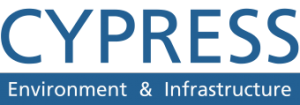We recognize that environmental impact assessment (EIA) is a pivotal tool for sustainable development. At Cypress, our team has extensive experience executing high-quality EIAs. But like any other process, there are environmental impact assessment advantages and disadvantages as well.
Whether you are an environmental planner or project developer, understanding the benefits and limitations of EIA gives key insights into this decision-making process.
In this article, we will examine how EIA helps identify impacts, engage stakeholders, and modify proposals to protect ecosystems.

Advantages of EIA
Environmental impact assessment (EIA) is a vital process that offers a range of advantages, contributing to responsible and sustainable development:
1. Identifying potential environmental impacts
EIA is a forward-looking tool that systematically assesses proposed projects and developments. By doing so, it identifies potential environmental impacts before they occur.
This foresight enables decision-makers to take preventive measures, mitigate harm, and protect natural resources. It acts as an environmental “early warning system”.
2. Integrating environmental considerations in decision-making
EIA ensures that environmental factors are integrated into our decision-making process at Cypress. This means that environmental concerns are not an afterthought but are considered alongside economic and social aspects.
As a result, projects are designed and implemented with a more comprehensive understanding of their environmental consequences.
3. Protecting natural resources and ecosystems
EIA is instrumental in safeguarding our planet’s natural resources and ecosystems. By evaluating the potential impacts of development projects, EIA can identify areas of high ecological importance.
This allows for protective measures or regulations to be put in place. Furthermore, EIA also requires our developers to implement measures that will enhance local biodiversity or restore damaged habitats.
4. Promoting sustainable development
EIA is aligned with the principles of sustainable development. It ensures that projects are not just economically viable but also environmentally and socially responsible.
By promoting projects that respect the carrying capacity of the environment, EIA helps create a more sustainable future. At Cypress, EIA helps us meet the needs of the present without compromising the ability of future generations to meet their own needs.
5. Engaging stakeholders and the public
EIA is a transparent process that encourages stakeholder and public engagement. By involving various parties, from local communities to environmental organizations, EIA ensures that diverse perspectives are considered. This inclusivity not only strengthens the decision-making process but also increases public awareness and understanding of environmental issues.
The advantages of EIA are fundamental to responsible and ethical development, and they extend to minimizing environmental harm and preserving our planet’s natural treasures.

Disadvantages of EIA
While EIA offers various benefits, it’s important to acknowledge its limitations and potential drawbacks:
1. Time and cost implications
Conducting a thorough EIA can be time-consuming and costly. It involves data collection, analysis, public consultations, and compliance with regulatory processes.
Delays in the assessment phase can result in project postponements and increased expenses. These time and cost implications can be burdensome for project proponents.
2. Subjectivity and complexity of assessments
EIA requires expert judgment to assess potential environmental impacts. This subjectivity can lead to variations in interpretations and findings. The complexity of environmental systems can also make assessments intricate and, at times, open to different interpretations. As a result, there may be debates about the accuracy of the assessments.
3. Potential conflicts and delays
EIA can uncover conflicting interests among stakeholders, including project proponents, local communities, environmental groups, and regulatory bodies.
Disagreements over the significance of environmental impacts or the adequacy of mitigation measures can lead to project delays or even legal disputes.
4. Limitations in addressing cumulative and indirect impacts
EIA tends to focus on direct project impacts. Cumulative and indirect impacts, which result from the combined effects of multiple projects or occur over an extended period, may not be fully addressed. This can lead to a fragmented understanding of the long-term environmental consequences of development.
5. Challenges in long-term impact prediction
Predicting the long-term environmental impacts of a project can be challenging. Factors like climate change, evolving ecosystems, and population shifts can influence how impacts manifest over time. EIA may not fully account for these dynamic variables, which can affect the accuracy of long-term impact predictions.
It’s essential to consider these disadvantages within the broader context of EIA. While EIA may have limitations, its potential to prevent or mitigate significant environmental harm often outweighs these drawbacks.
Recognizing these disadvantages encourages continuous improvement in the EIA process. At Cypress, we aim for more effective and balanced environmental management.
Improving EIA Practices
To address the limitations and maximize the benefits of EIA, it’s crucial to continuously enhance and refine the practices. We at Cypress, believe that these steps can contribute to improving EIA processes:
- Incorporating effective mitigation measures – They should aim to minimize negative effects on the environment and, when possible, enhance the natural surroundings.
- Strengthening regulations and transparency – Regulatory bodies need to regularly review and update guidelines to ensure that they remain relevant, comprehensive, and transparent.
- Advancing scientific methodologies and data collection – Utilizing the latest tools, such as remote sensing and geographic information systems (GIS), can provide more accurate and detailed information for assessments.
- Enhancing public involvement – Techniques like public meetings, consultations, and information sharing are essential. They help gather the valuable insights needed to improve projects.
- Training and capacity building – Training programs, workshops, and knowledge sharing can help ensure that individuals involved in EIA processes are well-informed and equipped with the necessary skills to conduct thorough assessments.
- Regular monitoring and adaptive management – Implementing post-project monitoring and adaptive management allows for the assessment of the accuracy of impact predictions and the effectiveness of mitigation measures.

Conclusion
This balanced look at the environmental impact assessment advantages and disadvantages has illuminated the nuances of this vital decision-making tool. We hope you have realized how, despite valid criticisms, EIA’s benefits often outweigh its limitations when executed skillfully.
At Cypress, we aim to maximize EIA’s potential through rigorous assessments and meaningful public participation. Although not perfect, EIA provides a net positive for people and the planet when its advantages and disadvantages are properly understood.
With expanded awareness, we can work collectively to implement and improve the EIA process. Environmental impact assessment advantages and disadvantages must be weighed judiciously to steer development toward sustainability.
